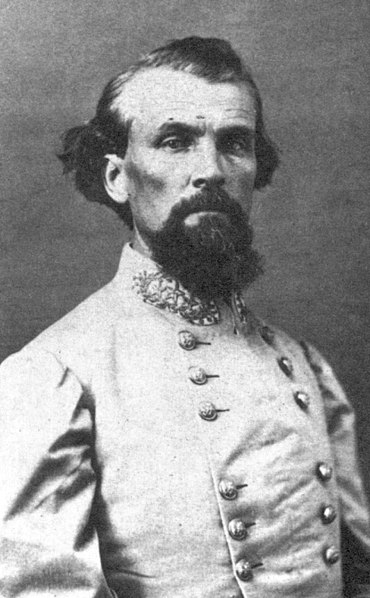 |
| Sherman |
After capturing Vicksburg in 1863, the next campaign that William T. Sherman's men took part in was the Meridian campaign in early 1864. Meridian was an important railway hub and Confederate military center. It was decided that Sherman would push out to capture it, leaving a swath of destruction in his wake. He set out on February 3, 1864 with 20,000 men. When he arrived at Meridian he planned to combine with a force of 7,000 cavalry under William Smith coming down from Tennessee. Jefferson Davis reinforced Leonidas Polk, the commander in the area, but Polk decided not to attack, and fell back before Sherman. The Federals did not encounter serious resistance in their advance, and captured Meridian on February 14, 1864. There Sherman waited for Smith to arrive.
However, Smith would not be coming. The Confederate resistance was led by Nathan Bedford Forrest, and this capable commander forced Smith to turn back. On February 22 he met Forrest in the Battle of Okolona. The Confederate troopers overran the Union barricades and drove them back in a more than ten mile long running battle. The rebel pursuit was eventually halted for lack of ammunition.
 |
| Forrest |
Sherman had already given up on Smith, and had left Meridian on February 20. He gave up his hopes of further advance into Alabama, and ordered his troops to wipe Meridian off the map. The Federals destroyed 115 miles of railroad, 61 bridges, more than a mile of trestles and many engines and cars. Sherman reported to Washington: “For five days 10,000 men worked hard and with a will in that work of destruction, with axes, crowbars, sledges, clawbars, and with fire.... Meridian with its depots, store-houses, arsenal, hospitals, offices, hotels, and cantonments no longer exists.” This was but a prelude to the destruction wrought in Sherman's famous March to the Sea.





0 comments:
Post a Comment